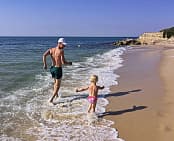bliznetcov
Instagram: @bliznetcov

Instagram: @bliznetcov
Good afternoon,
What can you tell about “natural running” and specific minimalist thin-soled running shoes with less cushioning, less support and low heel-to-toe drop? Is it good or is it bad, in your opinion?
And is it possible to run long distances safely in minimalist shoes and using natural running technique or more traditional running shoes are required for these purposes?

Master of Sports of International class in track and field athletics, winner of the Zurich marathon, participant of the Beijing 2008 Summer Olympics, multiple European Cup and Russian championships medalist, coach of the school “I Love Running”
Good day!
To my surprise, it proved to be that the main thing 90% of amateur runners want to know and want to be good at is a technique for running long distances. Why am I surprised? Just because there had never be a “cult of running techniques” among professional marathoners. Of course, elite runners can practice some elements of their running technique, but they don’t devote as much time as you think to this component while training. It’s because, after all, the development of power and functional capabilities of a sportsman mainly contributes to the growth of sporting results.
The term of “natural running” has been used relatively recently and appeared partly thanks to sports marketing. So, in my opinion - of course it’s just my personal opinion- I think we should consider individual characteristics of a runner in choosing a running technique. Don’t break up a sustainable system whatever it is and don’t expose your musculoskeletal system to unjustified risk by moving to a new motor pattern. Remember that an injury reduction is a primary goal of a “natural running” technique. But in many cases, it turns out - quite the opposite.
So, I would recommend you to be very careful attempting to switch to such a technique and following relevant recommendations for shoes as well. All of this can turn out badly for an unprepared musculoskeletal system.
As regards the opportunity to keep this running technique during the whole marathon distance, I can say this “option” will be hardly available for every runner due to differences in fitness level, state of muscles and tendons. And, after a while, the odds are that you begin to change your foot strike pattern from a forefoot strike to a heel strike, because relevant muscle groups are fatigued.
Good evening. Now I go in for fitness, play tennis and also swim in the pool. I have never practiced running before.
I am interested to try running 5 km. Do I need any special training? Where should i begin?
Thank you.

Good afternoon,
What is optimum training for a 10 year old boy needed to improve 60 and 1000 race results?

Good afternoon.
I run 10 km 4 times a week just to be in a good shape and health. My pace is about 6:30 and I want to increase my stamina to run longer without fatigue and short of breath.
What exercises should I do? Do I need do short sprints?
The second question: is abdominal breathing so important? When I practice it I feel dizzy.
There are no parks near my house so I have to run on asphalt or across the field. Besides shock absorbing running shoes what else do I need to protect my knees? Should I use a special running technique in this case?
Thank you.
